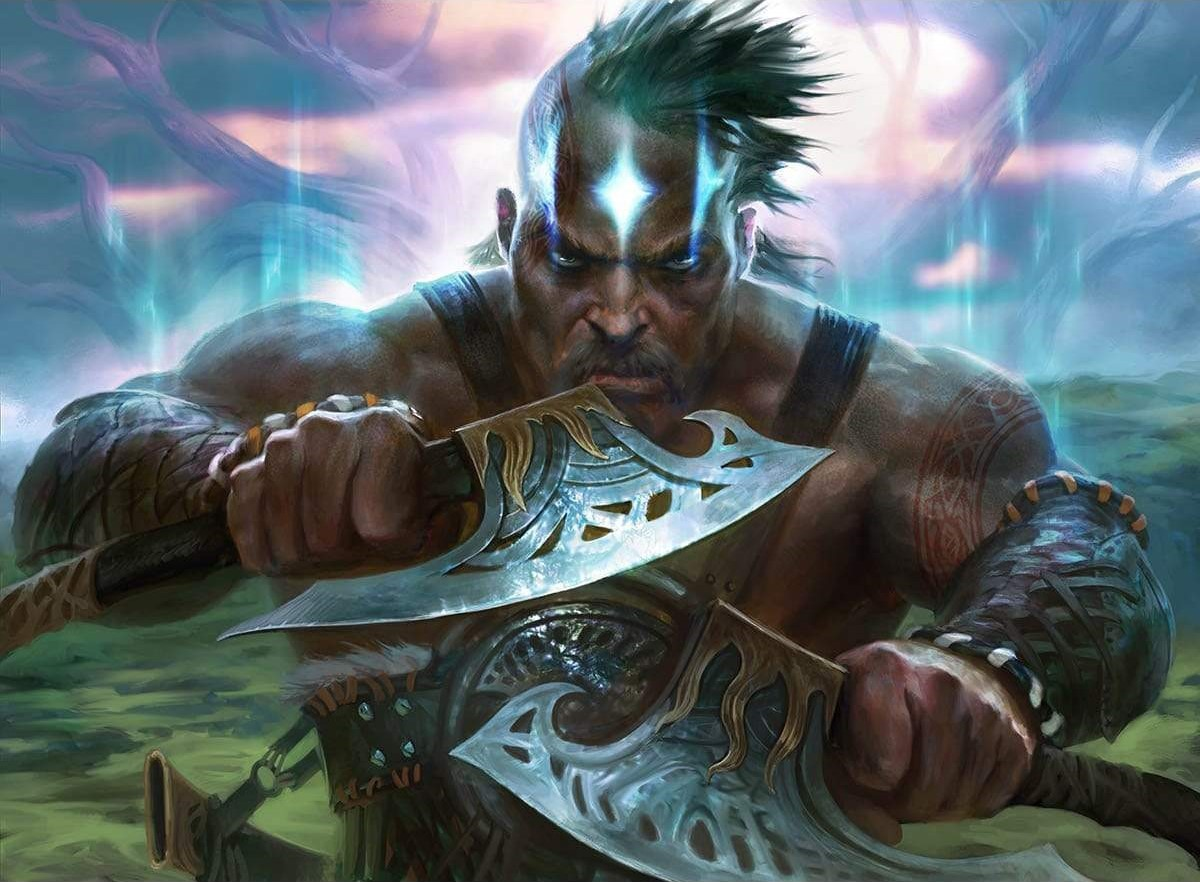
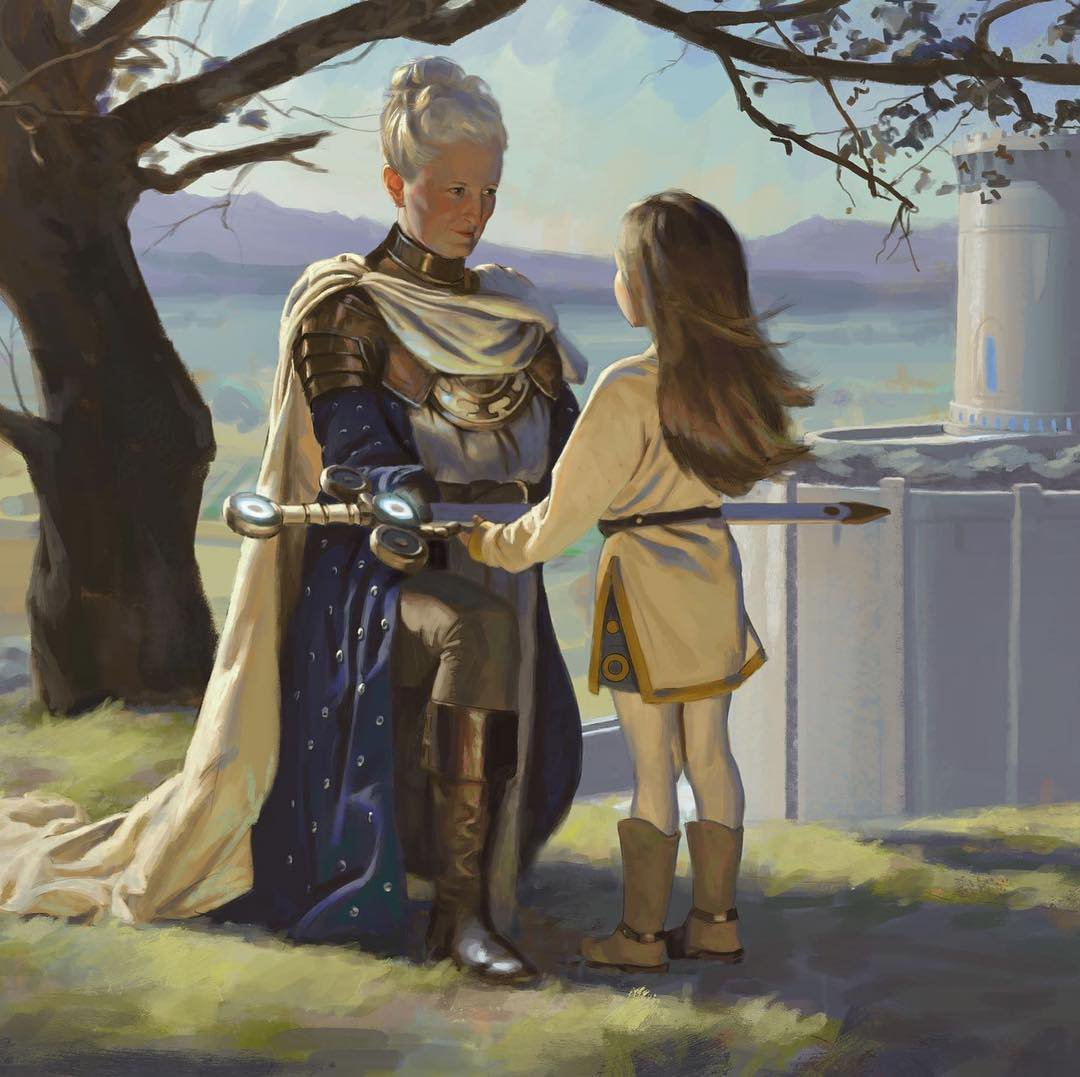

A Tome of Battle
A common complaint about recent D&D is the gulf of power and utility that opens up between the warrior and the mage. While the wizard, cleric, and druid learn world-altering spells, the fighter swings his sword a few more times. Moreover, the metanalysis of weapon combat is largely solved, to the detriment of most of the weapon list. The tools in this document attempt to provide warriors with meaningful choices, options, and incentives to take actions other than "I attack with the weapon I chose at level 1."
This is primarily a "gamist" document, so while flavor is considered, it does not claim to fix combat to some imagined realistic or historical standard, or expand the weapon list for its own sake. This work attempts to adhere to 5E conventions: only as few modifiers and rolls as necessary to the mechanics. Each set of rules is presented ala carte, so a DM may wish to allow only some of these pages or powers; a checklist is provided separately for that purpose.
Weapons and Techniques. The vanilla weapon list has duplication and weapons with no mechanical value. The revised weapons table attempts to make any weapon an interesting choice for a warrior, balanced by weapon damage dice, properties, and available weapon techniques. These weapon techniques improve weaker weapons, take advantage of circumstances, or impose effects rather than increasing the damage ceiling.
Combat Actions. Actions beyond basic attacks and grapples are often locked behind feats, making builds inflexible and competing with ability score improvements. The Combat Actions section moots certain feats (such as Charger and Grappler) with situational actions, codifies DMG object damage guidelines for combat, and adds more ways for PCs to interact with their enemies and environment.
Stances. An innovation in the 3E Tome of Battle, stances provide martial characters with passive bonuses during combat. Combat Stances replace 5E's Fighting Style feature with dynamic stances inspired by Unearthed Arcana and the Book of Nine Swords. Instead of one choice near character creation, a PC makes strategic and tactical choices during level-ups and rounds of combat.
Maneuvers. The final section vastly expands maneuvers, with specializations - Cut-Throat, Mystic Knight, Savage, or Warlord - that represent approaches to battlefield superiority alongside a standard maneuver group. Like warlock invocations, some maneuvers have level requirements and are correspondingly more powerful. These rules also include optional features to gain limited access to these powers in exchange for their lesser class bonuses: a fighter, paladin or ranger can replace a stance, a rogue can sacrifice some sneak attack damage to add on-hit effects, and a barbarian can reduce his critical damage bonus. At higher levels, monks learn to perform maneuvers using martial arts and ki.
Summary and Tables
New and Revised Features
| Standard Feature | Martial Prowess Feature | Page |
|---|---|---|
| Weapons Table | Revised Weapons Table | 3 |
| Martial Weapons Proficiency | Martial Weapons Proficiency, +1 Weapon Technique | 7 |
| Fighting Style | Combat Stance (+2 Stances) | 10 |
| Extra Attack (2, 3) | Extra Attack (2, 3), +2 Combat Stances (if applicable) | 10 |
| Ability Score Improvement | Ability Score Improvement, +1 Weapon Technique (if applicable) | 7 |
| Additional Fighting Style | Hybrid Stance | 10 |
| Fighting Initiate, Weapon Master | Fighting Initiate (Revised) | 10 |
| Combat Superiority | Combat Superiority (Revised) | 12 |
| Martial Adept Feat | Superior Technique | 12 |
| New Optional Features | Ki-Fueled Superiority, Roguish Superiority, Raging Superiority | 12 |
Weapon Techniques
| Weapon | Techniques | Weapon | Techniques | |
|---|---|---|---|---|
| Any (Shield) | Shield Bash | Longbow | Pinning Shot, Split Shot, Suppressing Fire | |
| Battleaxe* | Cleave, Crippling Cut, Finisher | Longsword* | Abwenden, Cleave, Crippling Cut, Iaijutsu, Piercing Strike | |
| Blowgun* | — | Mace* | Crushing Blow, Grazing Clout, Finisher | |
| Cestus | Close Quarters, Finisher, Grazing Clout | Maul* | Crushing Blow, Finisher | |
| Dart* | Pinning Shot | Morningstar* | Piercing Strike, Finisher | |
| Club* | Finisher, Grazing Clout. Shattering Clobber | Net | Entangle | |
| Dagger* | Close Quarters, Finisher, Paired Weapon, Pinning Shot | Pike* | Bracing, Lunge | |
| Flail* | Crushing Blow, Finisher, Thrash | Quarterstaff | Lunge, Shattering Clobber, Whirling Rebuff | |
| Glaive* | Bleeder, Cleave, Finisher | Rapier | Abwenden, Iaijutsu , Lunge | |
| Greataxe* | Cleave, Crippling Cut, Finisher, Whirling Rebuff | Saber | Abwenden, Bleeder, Crippling Cut, Iaijutsu | |
| Greatbow | Pinning Shot, Split Shot, Suppressing Fire | Scimitar* | Abwenden, Crippling Cut, Iaijutsu | |
| Greatclub* | Grazing Clout. Finisher, Shattering Clobber | Shortsword | Abwenden, Close Quarters, Iaijutsu | |
| Greatsword* | Cleave, Piercing Strike | Shortbow | Bleeder, Pinning Shot, Split Shot, Suppressing Fire | |
| Halberd* | Bracing, Lunge, Whirling Rebuff | Sling* | Grazing Clout, Split Shot, Suppressing Fire | |
| Handaxe* | Bleeder, Finisher, Close Quarters | Spear | Bracing, Lunge, Whirling Rebuff | |
| Hd. Xbow | Suppressing Fire | Sickle* | Bleeder, Finisher, Paired Weapon | |
| Hv. Xbow | Pinning Shot, Split Shot | Swordbreaker | Paired Weapon | |
| Javelin | Pinning Shot | Trident* | Bracing, Lunge, Whirling Rebuff | |
| Lance | Bracing, Lunge | Warhammer* | Crushing Blow, Finisher | |
| L. Xbow | Pinning Shot, Suppressing Fire | War Pick* | Piercing Strike | |
| L. Hammer* | Crushing Blow, Finisher, Grazing Clout, Paired Weapon | War Whip | Bleeder, Entangle, Thrash, Whirling Rebuff | |
| Improvised | Close Quarters, Shattering Clobber | Whip* | Bleeder, Entangle, Thrash, Whirling Rebuff |
Weapons with modified properties are denoted with an asterisk (*). New weapons are italicized.
Revised Weapons
| Name | Cost | Damage | Weight | Properties |
|---|---|---|---|---|
| Simple Melee | ||||
| Club | 1 sp | 1d4 bludgeoning | 2 lb. | Brutal, light |
| Dagger | 2 gp | 1d4 piercing | 1 lb. | Bandoleer, covert, finesse, light, thrown (20/60), reserve |
| Greatclub | 2 sp | 1d8 bludgeoning | 10 lb. | Brutal, heavy, two-handed |
| Handaxe | 5 gp | 1d6 slashing | 2 lb. | Bandoleer, light, thrown (20/60) |
| Javelin | 5 sp | 1d6 piercing | 2 lb. | Thrown (60/240) |
| Light Hammer | 2 gp | 1d4 bludgeoning | 2 lb. | Light, thrown (20/60), siege |
| Mace | 5 gp | 1d6 bludgeoning | 4 lb. | Siege |
| Pike | 3gp | 2d4 piercing | 18 lb | Heavy, reach, two-handed |
| Quarterstaff | 2 sp | 1d6 bludgeoning | 4 lb. | Versatile (1d8) |
| Sickle | 1 gp | 1d4 slashing | 1 lb. | Brutal, finesse, light, reserve |
| Spear (Short Spear) | 1 gp | 1d6 piercing | 3 lb. | Thrown (20/60), versatile (1d8) |
| Whip | 2 gp | 1d4 slashing | 3 lb. | Entrapping, finesse, reach |
| Simple Ranged | ||||
| Blowgun | 10 gp | 1d4 piercing | 1 lb. | Ammunition, covert, loading, ranged (25/100) |
| Light Crossbow | 25 gp | 1d8 piercing | 5 lb. | Ammunition, loading, ranged (80/320) two-handed |
| Dart | 5 cp | 1d4 piercing | 1/4 lb. | Covert, bandoleer Light, thrown (20/60), reserve |
| Shortbow | 25 gp | 1d6 piercing | 2 lb. | Ammunition, ranged (80/320), two-handed |
| Sling | 1 sp | 1d4 bludgeoning | — | Ammunition, brutal, ranged (30/120) |
| Martial Melee | ||||
| Battleaxe | 10 gp | 2d4 slashing | 4 lb. | Versatile (1d10) |
| Cestus | 5 sp | 1d4 bludgeoning | 1/2 lb. | Brutal, finesse, light, monk, reserve, special |
| Flail | 10 gp | 2d4 bludgeoning | 5 lb. | — |
| Halberd (Polearm) | 20 gp | 1d10 slashing | 6 lb. | Bladed, heavy, reach, two-handed |
| Glaive | 20 gp | 2d4 slashing | 5 lb. | |
| Greataxe | 30 gp | 1d12 slashing | 7 lb. | Brutal, heavy, two-handed |
| Greatsword | 50 gp | 2d6 slashing | 6 lb. | Bladed, heavy, two-handed |
| Lance | 10 gp | 1d12 piercing | 7 lb. | Heavy, reach, special |
| Longsword | 15 gp | 1d8 slashing | 3 lb. | Bladed, versatile (1d10) |
| Maul | 10 gp | 2d6 bludgeoning | 10 lb. | Heavy, two-handed, siege |
| Morningstar | 15 gp | 2d4 piercing | 5 lb. | — |
| Rapier | 25 gp | 1d8 piercing | 3 lb. | Finesse |
| Saber | 10 gp | 1d6 slashing | 2 lb. | Finesse, light, monk |
| Scimitar* | 25 gp | 1d8 slashing | 3 lb. | Finesse |
| Shortsword | 10 gp | 1d6 piercing | 2 lb. | Finesse, light, reserve |
| Swordbreaker | 25 gp | 1d4 piercing | 1 lb. | Entrapping, finesse, light, reserve |
| Trident (Long Spear) | 5 gp | 1d8 piercing | 4 lb. | Entrapping, |
| Warhammer | 15 gp | 1d8 bludgeoning | 4 lb. | Siege, versatile (1d10) |
| War Pick | 5 gp | 1d8 piercing | 6 lb. | Heavy, siege |
| War Whip | 15 gp | 1d6 slashing | 4 lb. | Entrapping, finesse, reach |
Revised Weapons (Cont.)
| Name | Cost | Damage | Weight | Properties |
|---|---|---|---|---|
| Martial Ranged | ||||
| Hand Crossbow | 75 gp | 1d6 piercing | 3 lb. | Ammunition, loading, ranged (30/120) |
| Heavy Crossbow | 50 gp | 1d10 piercing | 18 lb. | Ammunition, heavy, loading, ranged (100/400), two-handed |
| Greatbow | 100 gp | 2d6 piercing | 6 lb. | Ammunition, heavy, ranged (200/800), special, two-handed |
| Longbow | 50 gp | 1d8 piercing | 2 lb. | Ammunition, heavy, ranged (150/600), two-handed |
| Net | 1 gp | — | 3 lb. | Entrapping, special, thrown (range 5/15) |
New and Revised Weapon Properties
Bandoleer
You can draw this weapon from an appropriate container or case as part of making a thrown weapon attack with it.
Brutal
On a critical hit, this weapon adds 1d4 to the damage roll in addition to doubling the damage dice.
Bladed
The damage type of this weapon is piercing or slashing (your choice).
Covert
When you make a sneak attack with this weapon, your sneak attack dice become d8s instead of d6s. If you are hidden, a missed ranged attack does not reveal your location.
Entrapping
When you want to catch and restrain a weapon in combat, you can use the Attack action to make a special melee attack, an entrapment attempt with this weapon. If you have multiple attacks as part of the Attack action, this replaces one of them. The target of your entrapment must be within the reach of your weapon and wielding a melee or ranged weapon.
Make a Dexterity (Sleight of Hand) check contested by the target's Strength (Athletics) or Dexterity (Acrobatics) (its choice). A creature wielding a weapon in two hands has advantage on this check, and a creature larger than you automatically wins. If you win, the target can't make attacks with the entrapped weapon until the entrapment ends.
You can't move out of your weapon's range, make an attack with the entrapping weapon, or drop your own weapon without releasing the entrapped weapon, which you can do at any time. If the target moves or is moved outside your weapon's reach, the entrapment ends and you can use your reaction to attempt to Disarm it (pg. 5) with advantage on your attack roll to do so.
Heavy
A heavy weapon's size or mass make it difficult to use without counterbalancing weight. Small and Tiny creatures have disadvantage on attack rolls with heavy weapons as if using a weapon sized for a larger attacker (DMG pg. 278). Small and Tiny creatures may craft versions of these weapons that are more suited to them, with the size of all damage dice reduced by 2 (e.g. 1d10 becomes 1d8, 2d6 becomes 2d4, etc.).
Escaping an Entrapment
A creature can use its action to attempt to free its entrapped weapon by making a Strength (Athletics) or Dexterity (Acrobatics) check contested by your Dexterity (Sleight of Hand).
Reserve
Attacking with this weapon while prone or restrained does not impose disadvantage on the attack roll.
Siege
This weapon deals double damage to structures and objects.
New Weapons
Cestus
The cestus, or brass knuckles, are any striking glove or weapon that protects the hand while adding power to strikes. Claw weapons may deal slashing or piercing damage instead. Add the cestus to the monk weapons list (PHB pg.78).
Special. Attacks with the cestus count as unarmed strikes.
Greatbow
A greatbow is a massive arc of sturdy wood, much larger than a typical longbow, with draw weight beyond the strength of most men. It cannot be used while mounted, and readying or stowing it uses your bonus action or action, instead of an object interaction. Creatures with less than 13 Strength make attacks with the greatbow with disadvantage, while creatures with less than 11 strength cannot draw it at all.
Special: Add your Strength modifier instead of your Dexterity modifier to your weapon damage rolls.
Saber
A curved, single-edged sword often used as a sidearm. Add the saber to the monk weapons list (PHB pg.78).
Swordbreaker
A dagger with a series of hooked, horizontal notches opposite the blade, used to catch and entrap the opponent's weapon.
War Whip
A reinforced whip, chain, juijieban, kusarigama, meteor hammer, or other martial variant of the whip.
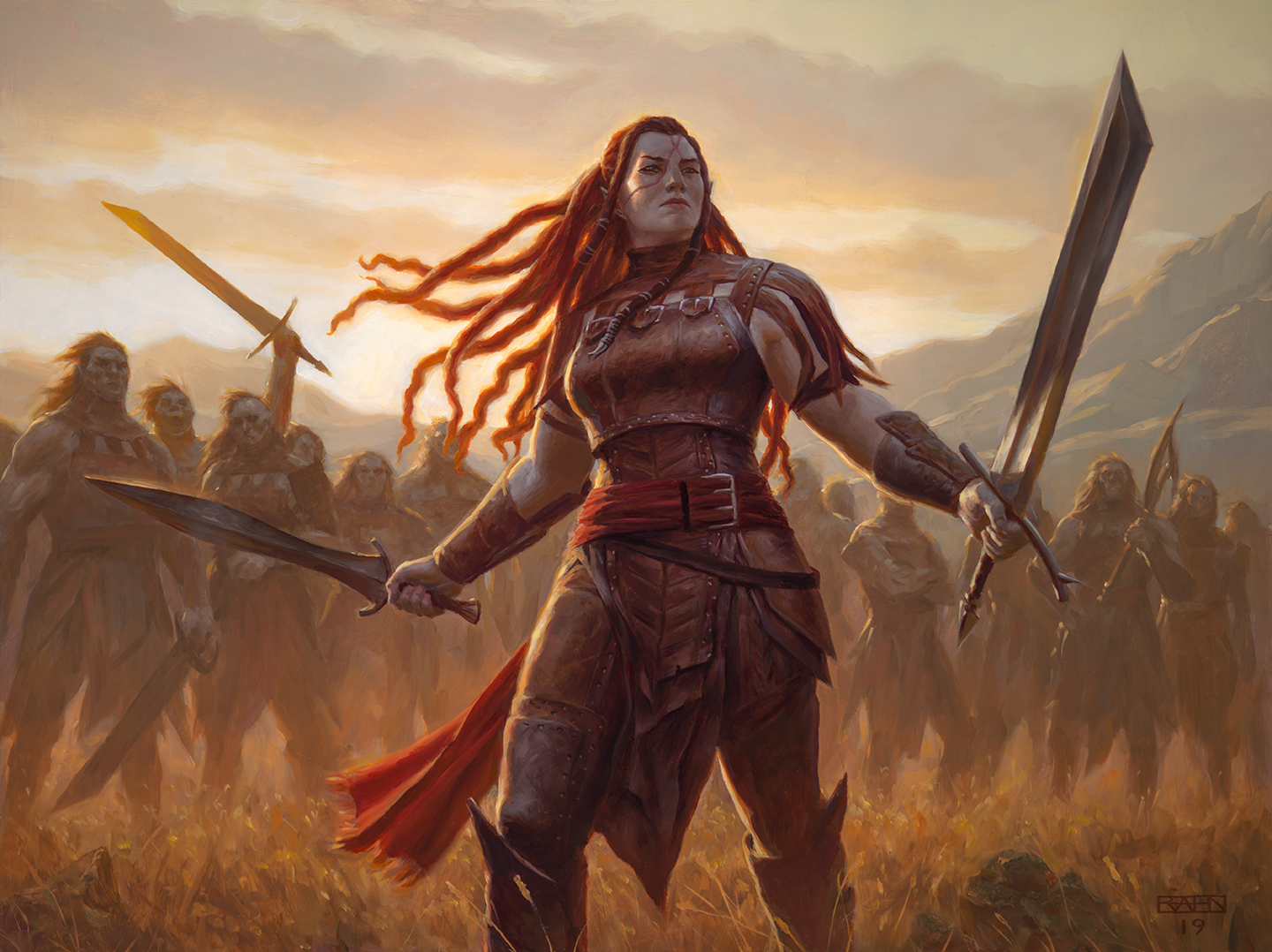

Additional Combat Actions
This section provides rules for conditions and effects that are otherwise adjudicated by DM rulings, like restraining a spellcaster or executing a prisoner. Some of these actions replace weak feats or features, such as Charger, Grappler, or Berserker's Intimidating Presence, or modify actions that become less attractive to characters with multiple attacks.
Some actions in this section use hit dice as a resource (marked with an asterisk), and a DM may want to disallow them; these powerful actions may grant excessive resources to a party that has fewer encounters and short rests per day.
Castle
As an action, you can move into the space of a willing creature within 5 feet of you, moving the creature into the space you previously occupied. You must both fit in the space available. Neither you nor the target provoke opportunity attacks for this movement.
Charge
When you use an action to Dash and move at least 10 feet in a straight line towards a creature, you can make one melee attack against it as a bonus action. If you hit with a Strength-based attack, you can choose to push the creature 5 feet away or add +5 damage for each level of your Extra Attack. Afterwards, you lose any remaining movement.
Coup de Grace
As an action, you attempt to finish a helpless opponent, one that is unconscious, paralyzed, or otherwise rendered unable to take actions or use movement (the incapacitated condition is necessary but not sufficient). You deal an automatic critical hit with a melee attack (no attack roll needed). If the creature survives the damage, it must succeed on a Constitution saving throw against a DC equal to 10 or half your damage roll, whichever is higher. On a failure, it dies. A rogue applies sneak attack damage when delivering a coup de grace.
Delivering a coup de grace provokes opportunity attacks from creatures within 5 feet of you and reduces your speed to 0 until the end of the turn.
Disarm
DMG pg. 271, revised
As an action, or in place of two weapon attacks, you attempt to knock a weapon or another item from a target's grasp by making an attack roll contested by the target's Strength (Athletics) check or Dexterity (Acrobatics) check (its choice).
If you win, the attack causes no damage or other ill effect, but the defender drops the item, which lands in an unoccupied space of your choice within 15 feet of it. Items that are worn or attached cannot be disarmed.
You have disadvantage on your attack roll if the target is holding the item with two or more hands. The target has advantage on its ability check if it is larger than you, or disadvantage if it is smaller.
Distraction
When you take the Attack action, you can replace one of your weapon attacks with a move that puts an enemy off-balance. Make a Dexterity (Sleight of Hand) check against the Wisdom (Perception) check of a creature within 5 feet of you. If you win this check, the creature cannot take reactions until the start of its next turn.
First Aid*
As an action, you bind wounds and apply simple first aid with a Healer's Kit. Expend a use of the kit and make a DC 10 Wisdom (Medicine) check targeting a creature within five feet that has less than half its maximum number of hit points.
On a success, the target can choose to expend one hit die as if it did so during a short rest, plus one additional die for each 5 points you exceed the DC. If the creature's current hit points exceed half of its maximum hit points after expending a die, it cannot spend any more dice, even if your check result would allow it to do so.
Flee
When you Dash as an action and are not within a hostile creature's reach, you can attempt to flee the battlefield, dropping any items in your hands. If you do so, you can move half your speed as a bonus action, so long as your movement is in the safest possible route away from all threats. If a creature uses both its movement and action to Dash in pursuit of you, it cannot use the Charge action and the DM may begin a Chase (DMG pg.252) if appropriate.
Heroic Resolve*
When you make a death saving throw, you can expend and roll a hit die, adding the result to your roll. You must choose to do so before making the roll. If you roll a 1 on the d20 but the total result would succeed, the roll counts as one failure instead of two.
You gain a level of exhaustion, and recover one fewer hit die (minimum zero) at the end of your next long rest.
Hurl*
If you are grappling a target your size or smaller, you can exert yourself in an attempt to hit it with the ground. As a special melee attack, expend one or more hit dice, up to a number equal to your Strength modifier. You sling the creature 5 feet away from you and it must make a Dexterity saving throw against a DC equal to 8 + your Strength (Athletics) modifier, or it is thrown an additional 5 feet per hit die expended and lands prone.
The creature takes bludgeoning damage equal to your Strength modifier, plus 1d4 for each 5 feet it was thrown.
Knockout Blow
Once per turn, when you hit a surprised, incapacitated, or restrained creature with a bludgeoning attack, you can try to knock it out. Roll your damage as normal, but instead of taking damage the creature must succeed on a Constitution saving throw against a DC equal to 10 or half your damage roll, whichever is higher, or it is rendered unconscious for 1 minute. The target awakens if it takes damage or another creature uses an action to wake it. This ability has no effect on constructs and undead.
Overrun / Tumble
DMG pg. 272, revised
When you try to move through a hostile creature's space, you can try to force through by overrunning the creature. As an action or bonus action, make a Strength (Athletics) check contested by the creature's Strength (Athletics) check. You have advantage on your roll if you are larger than the creature, or disadvantage if you are smaller. If you win, you can move through (but not end your turn in) the hostile creature's space once on this turn.
Alternatively, you can attempt to duck, dodge, and weave past the hostile creature. As an action or bonus action, make a Dexterity (Acrobatics) check contested by the creature's Dexterity (Acrobatics) check. If you win, you can move through (but not end your turn in) the hostile creature's space once this turn. If the target wins, it can use its reaction to attempt to shove you or knock you prone.
Seize
While grappling a target that is your size or smaller, you can attempt to pin it with an additional free hand. As a special melee attack, make another grapple check. If you win, both you and the target are restrained until the grapple ends, and you can choose one of the following additional effects:
- You maneuver to the target's side or back. While restrained, the creature cannot attack you.
- You pin the target's hands and arms. While restrained, the creature cannot cast a spell with a somatic or material component, draw or attack with a non-light weapon, or take the Use an Object action.
- You cover the target's mouth and muffle its speech. While restrained, the creature cannot be heard clearly beyond 15 feet, or at all beyond 30 feet. If the creature attempts to cast a spell with a verbal component, it must succeed on a Dexterity saving throw against a DC of 8 + your Strength modifier or the spell fails but the spell slot is not lost. A creature smaller than you has disadvantage on this saving throw.
A creature can be subject to only one of these effects from each creature grappling it.
Sprint*
Pushing yourself to go slightly faster, you overexert yourself while moving into or out of danger. When you use your action or bonus action to Dash, you can expend and roll a hit die to move farther, gaining an amount of speed equal to 5 x half the die roll (rounded up) until the end of your turn. In addition, you can add your hit die to Strength (Athletics) checks until the end of this turn.
You cannot use this ability if your speed or movement has been reduced by an effect or condition.
Sunder
DMG pg. 246, extended
As an action, or in place of two weapon attacks, you attempt to break a weapon, shield, armor, or object the target is wearing or holding. The attack roll is made against the object’s AC, plus the Dexterity modifier and any circumstantial or magical bonuses to AC of the creature holding or wearing it. The object is considered to have half-cover (+2 bonus to AC) if it is not being held, and you have disadvantage on the attack roll if the object is more than one size smaller than the target.
On a hit, you deal damage to the object. If the object is reduced to 0 hit points, it is broken and can't be used in a normal fashion until it is repaired. Sundered armor provides no AC benefit. An item can be repaired via magic or by spending 1 hour using an appropriate set of tools, possibly requiring part of the item’s value in raw materials.
The hit points and AC of an object are subject to your DM's discretion, with some guidelines provided here and in the DMG. Most creatures wield weapons and shields that are small, resilient objects with 11 (3d6) hit points, while most medium-sized armor has 4 (1d6) hit points for each point of AC above 10. Most leather or wood objects have 15 AC and iron or steel objects have 19 AC. Most adventuring equipment has resistance to nonmagical damage and immunity to psychic and poison damage. Magical weapons or objects may be immune to sundering damage.
Tackle
You charge an opponent, attempting to subdue it using your momentum and weight. When you use your action to Dash and you move at least 10 feet in a straight line towards a creature, you can attempt to grapple or shove it as a bonus action. If you win the opposed check, the target is knocked prone and either grappled or pushed 5 feet (your choice). Otherwise, the target is unaffected.
In either case, you are knocked prone and your speed becomes 0 until the end of your turn.
Terrorize
You can use your action to frighten someone with your presence. Choose one creature within 15 feet of you that can see or hear you. It must succeed on a Wisdom saving throw (DC equal to 8 + your proficiency bonus + your Charisma or Strength modifier) or be frightened of you until the end of your next turn. On subsequent turns, you can use your action to extend the duration of this effect on the frightened creature until the end of your next turn. This effect ends if the creature ends its turn out of line of sight or more than 60 feet away from you. If the creature succeeds on its saving throw or the frightened condition ends, you can’t use this feature on that creature again for 24 hours.
A 10th level barbarian who follows the Path of the Berserker can initiate or extend this ability as a bonus action.
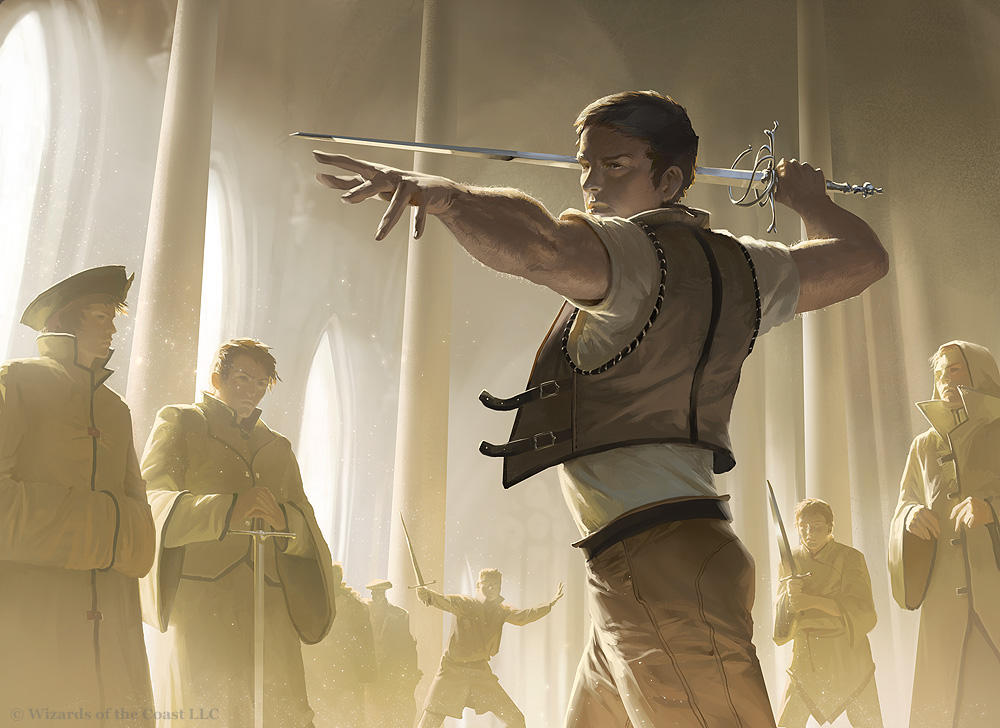

Weapon Techniques
When a class or feature grants you general proficiency with martial weapons, or you choose the Pact of the Blade, Path of the Kensei, or the Swashbuckler Archetype, you can choose to learn one technique that takes advantage of the properties of a weapon or family of weapons, as given on the table below. You learn one additional weapon technique of your choice each time you gain an Ability Score Improvement, or for each you have previously received.
At your DM's discretion, you can learn a new technique by spending a number of downtime days equal to 10 minus your Intelligence modifier training with an appropriate expert.
When a technique requires a saving throw, the DC is 8 + your weapon attack bonus. A technique can only be used while wielding a weapon in its list, and you must use the technique with a weapon in its list, unless otherwise noted.
When a technique deals damage to a creature without an attack roll, you can add any appropriate bonus from your weapon or class features to the damage roll, such as a barbarian's rage or a flametongue's fire damage, but cannot use a feature or power that triggers on a hit, such as sneak attack or smite. When a technique is used as a special melee attack, it must replace the attack granted by the Attack action. If you have multiple attacks as part of the Attack action, the technique replaces one of them.
Weapon Techniques Reference Table
| Feature | Weapons |
|---|---|
| Abwenden | Longsword, Rapier, Saber, Scimitar, Shortsword |
| Bleeder | Glaive, Hand Axe, Saber, Shortbow, Sickle, War Whip, Whip |
| Bracing | Halberd, Lance, Pike, Spear, Trident |
| Cleave | Any Two-handed or Versatile Slashing |
| Close Quarters | Any Improvised, Cestus, Dagger, Hand Axe, Shortsword |
| Crippling Cut | Battleaxe, Greataxe, Longsword, Saber, Scimitar |
| Crushing Blow | Flail, Light Hammer, Mace, Maul, Warhammer |
| Entangle | Net, War Whip, Whip |
| Finisher | Any Axe, Cestus, Any Club, Dagger, Flail, Light Hammer, Mace, Maul, Morningstar, Sickle, Warhammer |
| Flexible Flurry | Any Versatile |
| Grazing Clout | Cestus, Club, Greatclub, Light Hammer, Mace, Sling |
| Iaijutsu | Longsword, Rapier, Saber, Scimitar, Shortsword |
| Lunge | Halberd, Lance, Pike, Quarterstaff, Rapier, Spear, Trident |
| Paired Weapon | Dagger, Light Hammer, Sickle, Swordbreaker |
| Piercing Strike | Greatsword, Longsword, Morningstar, War Pick |
| Pinning Shot | Any Bow, Dagger, Dart, Hand axe, Javelin, Heavy or Light Crossbow |
| Shattering Clobber | Any Improvised, Club, Greatclub, Quarterstaff |
| Shield Bash | None (shield) |
| Split Shot | Any Bow, Heavy Crossbow, Sling |
| Suppressing Fire | Any Bow, Hand or Light Crossbow, Sling |
| Thrash | Flail, Any Whip |
| Whirling Rebuff | Greataxe, Halberd, Quarterstaff, Spear, Trident, Any Whip |
Weapon Techniques
Abwenden
Longsword, Rapier, Saber, Scimitar, Shortsword
A fencing parry, warding off a blow using your own blade. When a creature hits you with a melee attack and you are not wielding any other weapon or a shield, you can use your reaction to make an attack roll. If the result equals or exceeds the triggering attack roll, the attack misses or, if it is a critical hit, is treated as a normal hit.
If you are smaller than the attacking creature, your attack roll is made at disadvantage.
Bleeder
Glaive, Hand Axe, Saber, Shortbow, Sickle, War Whip, Whip
When an attack roll with this weapon exceeds the target's AC by 5 or more, or on a critical hit, the weapon inflicts a bleeding wound. At the start of each of its turns, a bleeding creature takes slashing damage equal to your proficiency bonus, ending when it receives magical healing or a creature uses an action to make a DC10 Wisdom (Medicine) check to stop the flow of blood.
A creature can have only one bleeding wound at a time.
Bracing
Halberd, Lance, Pike, Spear, Trident
You know how to set your weapon to add power to your defensive strikes. When you use a readied action to attack a creature that has moved at least ten feet on this turn, add an additional weapon die to the damage roll and the target must make a Strength saving throw. On a failure, it falls prone and, if mounted, falls from its mount.
Cleave
Any two-handed or versatile slashing
Once on your turn in place of a two-handed melee attack, you can strike at multiple creatures using a single swing. Each targeted creature must be within 5 feet of you and one other target, and you can choose a number of targets up to your proficiency bonus. Each target must succeed on a Dexterity saving throw. On a failure, it takes your weapon's damage roll as damage, using a d4 in place of its usual weapon damage die.
Close Quarters
Any improvised, Cestus, Dagger, Hand Axe,Shortsword
When you successfully grapple or escape a grapple, you can make one weapon attack as a bonus action. When an opponent fails to escape your grapple, you can make a weapon attack against it as a reaction.
Crippling Cut
Battleaxe, Greataxe, Longsword, Saber, Scimitar
As a special melee attack, you aim for a vulnerable limb with a precise strike. The target must succeed on a Constitution saving throw or take slashing damage equal to your weapon's ability modifier and have one form of speed (such as walking or flying) reduced by 10 feet (to a minimum of 0). This effect ends when the creature is healed or spends one turn without using any movement.
Crushing Blow
Flail, Light Hammer, Mace, Maul, Warhammer
You can shatter armor with massive swings. Either by using both an action and bonus action, or in place of two weapon attacks, you can make a single attack against a heavily- or naturally-armored enemy within reach. On a hit, you deal your normal weapon damage and the target must succeed on a Constitution saving throw. If it fails, its AC is reduced by 2 until the armor is adjusted using an action or, for natural armor, the creature regains hit points. This ability is ineffective against magical armor and constructs.
A creature's AC can't be reduced this way more than once.
Entangle
Net, War Whip, Whip
You can make a disarm, grapple, shove, or trip attack while up to 10 feet from your target by using the extra reach of your weapon. Your reach for starting or maintaining a grapple when using this weapon is 10 feet instead of 5 feet. If you successfully shove a creature using this weapon, you can choose to either push the target five feet away or pull the target five feet closer.
If you grapple at range, you can't use the weapon to attack or drop the weapon, or the grapple ends. Either combatant can use an action to attempt to pull the other 5 feet closer with an opposed Strength (Athletics) check. If one combatant is larger than the other, it has advantage on its roll.
Finisher
Battleaxe, Cestus, Club, Dagger, Flail, Greataxe, Greatclub, Hand Axe, Light Hammer, Mace, Maul, Morningstar, Sickle, Warhammer
When you make a melee attack on a prone or incapacitated creature, you can forgo advantage on an attack roll to attempt to execute it. If your attack roll exceeds the target's remaining hit points, its hit points are reduced to zero. If not, but the attack hits, you deal damage as normal.
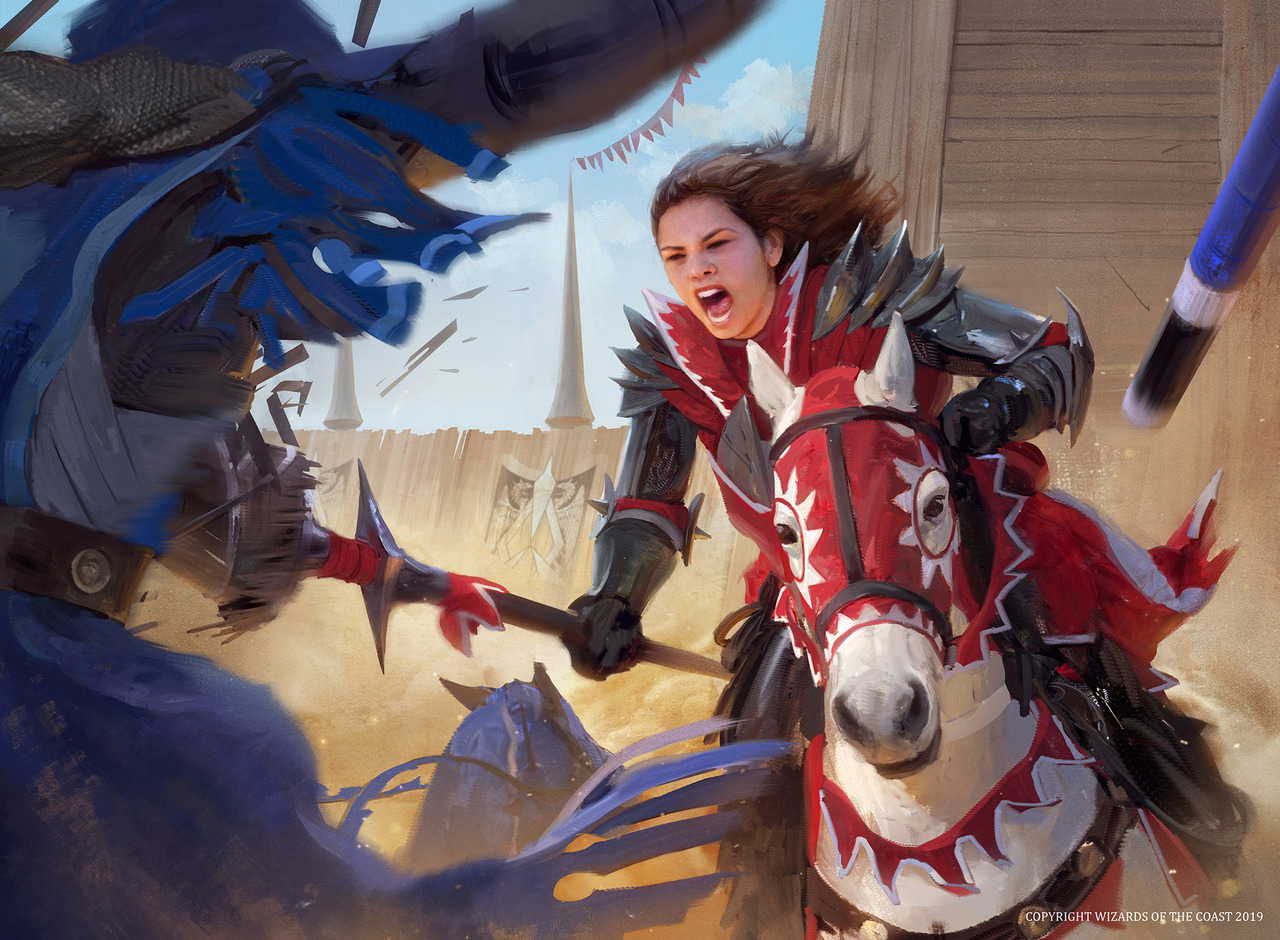
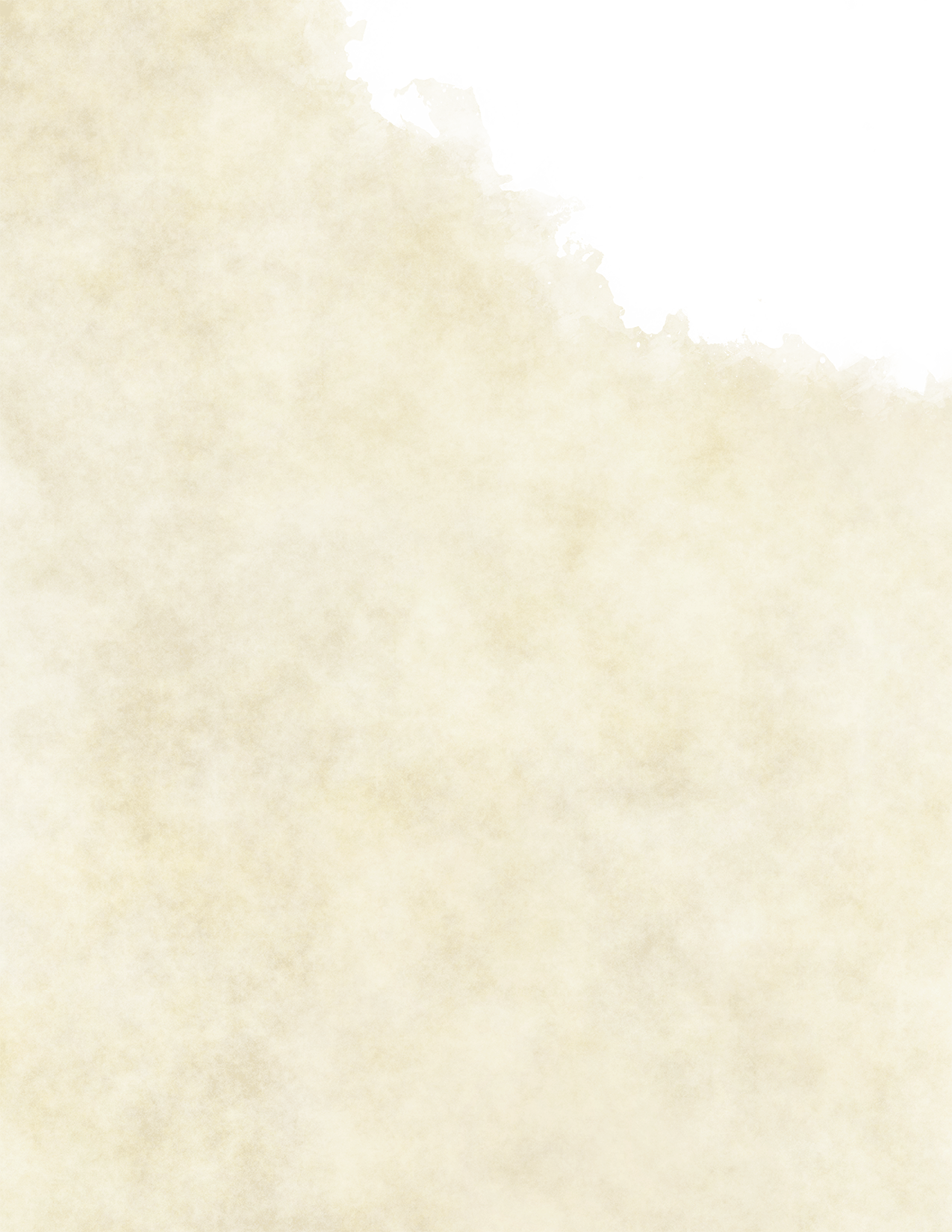

Flexible Flurry
Any versatile
The first time you make a one-handed attack with a versatile weapon on your turn, you gain a +1 bonus to your AC until the start of your next turn, unless you are wielding another weapon or wearing a shield.
Grazing Clout
Cestus, Club, Greatclub, Light Hammer, Mace, Sling
When an attack roll with this weapon misses the target's AC by 4 or less, the bludgeon still connects, if not so powerfully. The target takes bludgeoning damage equal to the weapon's damage die.
Iaijutsu
Longsword, Rapier, Saber, Scimitar, Shortsword
You draw this weapon from a scabbard or similar device as part of your attack with it, without using an object interaction.
If you have multiple attacks as part of your Attack action, you can make those multiple attacks when you use a readied action, instead of making a single attack.
Lunge
Halberd, Lance, Pike, Quarterstaff, Rapier, Spear, Trident
You can use a bonus action to extend in a lunging strike. You gain 5 feet of reach for your next attack on this turn.
Paired Weapon
Dagger, Light Hammer, Sickle, Swordbreaker
While you wield both this weapon and a non-light weapon, you gain a +1 bonus to your AC. Once per turn, you can choose to add 1d4 to the damage roll of your other weapon. When you do so, you lose the bonus to AC until the beginning of your next turn, unless you have the Dual Wielder feat.
Piercing Strike
Greatsword, Longsword, Morningstar, War Pick
As a special melee attack, you can attempt to penetrate and damage an opponent's heavy or natural armor. The target must make a Dexterity saving throw. On a failure, it takes piercing damage equal to your Strength modifier and its AC is reduced by 1 (maximum 2) until its armor is repaired using an action or, for natural armor, the creature receives regains hit points. This ability is ineffective against magical armor and constructs.
Pinning Shot
Any Bow, Dagger, Dart, Hand axe, Javelin, Heavy/Light Xbow
As an action, you can attempt to pin a Large or smaller creature that is within normal range of your weapon, sticking it to the ground or other terrain. A creature is unaffected if it is currently flying, swimming, or is immune to being knocked prone. Otherwise, the target must succeed on a Strength or Dexterity saving throw (its choice) or its speed is reduced to 0 until the end of its next turn. As an action on its turn, the creature can pull free and regain its normal speed.
Shattering Clobber
Any improvised, Club, Greatclub, Quarterstaff
When you are using an improvised weapon that deals bludgeoning damage or a nonmagical weapon listed above, you can use a weapon attack to strike with such force that the weapon breaks. The target must succeed on a Dexterity saving throw or take bludgeoning damage equal to a critical hit with your weapon, which is rendered broken and useless.
Shield Bash
None (shield)
As a special melee attack, you drive an opponent off-balance by smashing through its guard with your shield. The target must succeed on a Strength saving throw or it takes bludgeoning damage equal to your Strength modifier and your next attack roll against it this turn has advantage.
Split Shot
Any Bow, Heavy Crossbow, Sling
Once per turn in place of a ranged attack, you nock two pieces of ammunition and fire them at two creatures within 5 feet of each other. Make a ranged attack against each target; if either attack misses, both do. If both attacks hit, deal your weapon damage to each creature.
Suppressing Fire
Any Bow, Hand or Light Crossbow, Sling
You fire rapidly but inaccurately at an opponent, diverting its attention to you. As an action, expend three pieces of ammunition to force a creature within 30 feet to make a Wisdom saving throw. On a failure, it has disadvantage on attack rolls that don’t target you until the end of its next turn, unless you are more than 30 feet away from it.
Thrash
Flail, Any Whip
You swing your weapon wildly, denying an area to your enemies. In place of a weapon attack, choose a 5-foot square within your weapon's range. Until the start of your next turn, or if you move, attack with your weapon, choose to stop thrashing, or have any condition imposed on you, any creature that starts in or enters this space for the first time on a turn must make a Dexterity saving throw. On a failure, it takes damage as if you hit it with this weapon.
Whirling Rebuff
Greataxe, Halberd, Quarterstaff, Spear, Trident, Any Whip
As a special melee attack, you brandish your weapon to drive opponents away, up to a number of targets equal to your proficiency bonus. Each target must be within 5 feet from you and one other target. A targeted creature must succeed on a Strength saving throw or be pushed 5 feet in a direction of your choice.
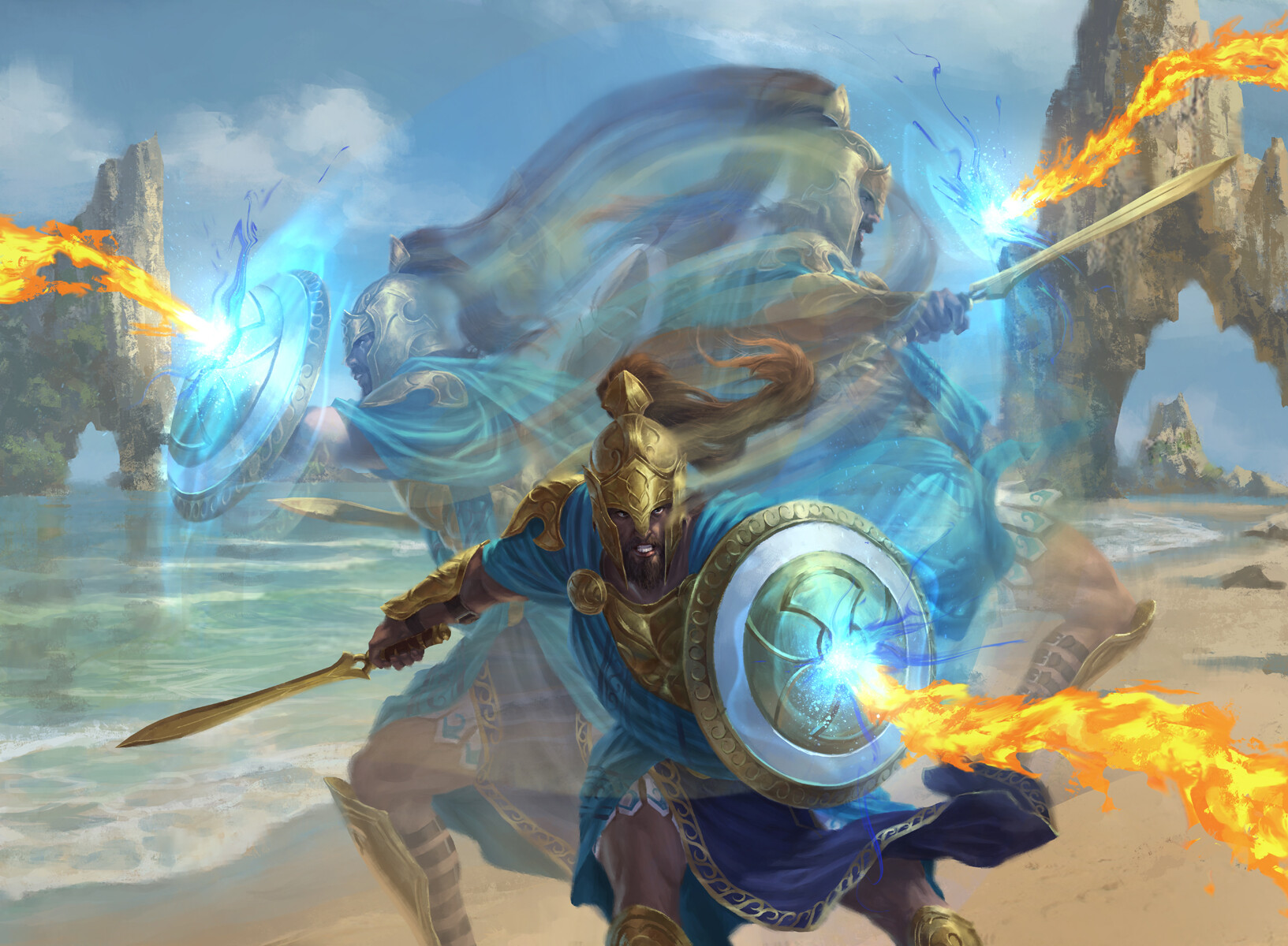


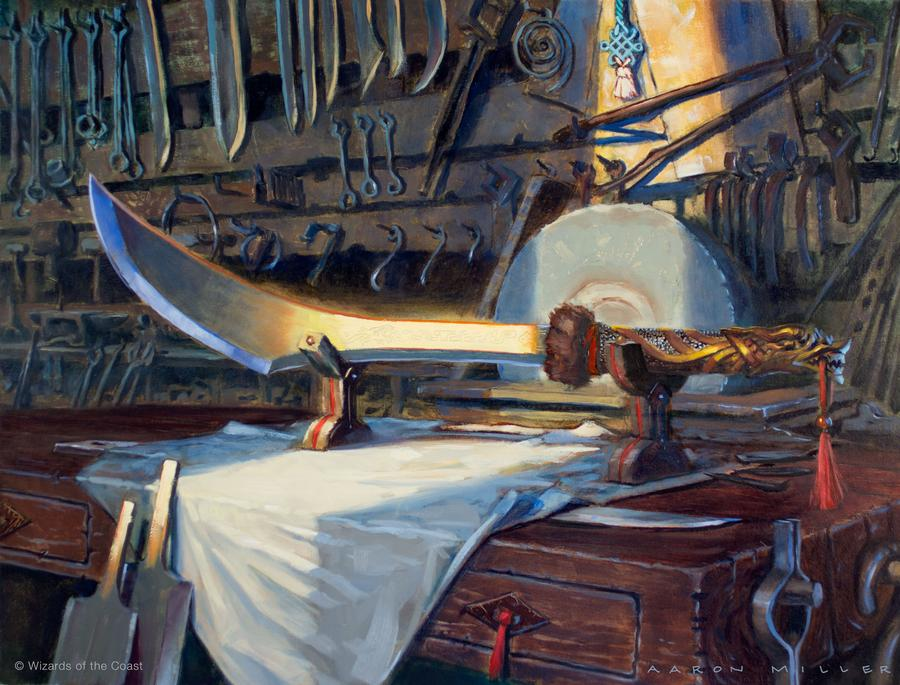
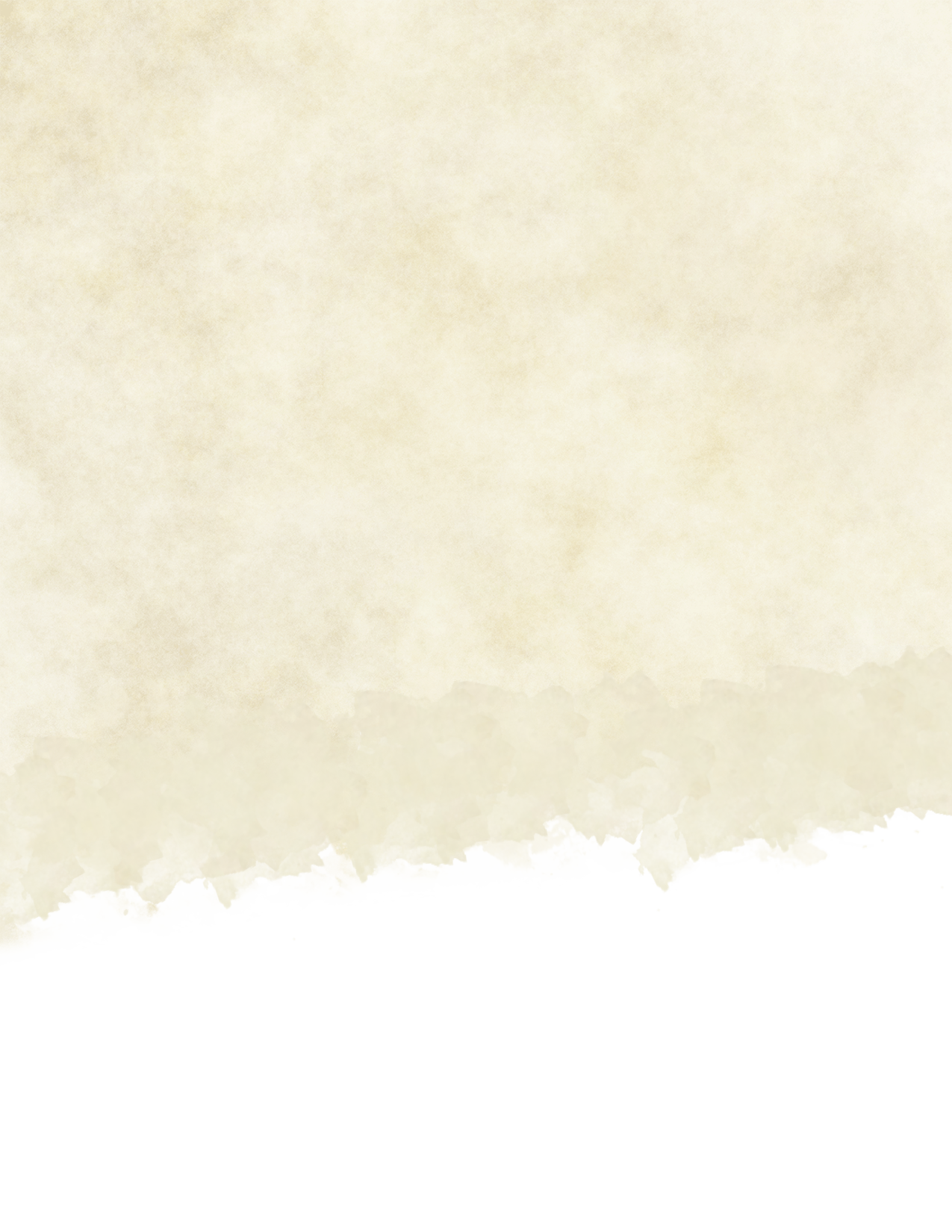
Combat Stances
Stances were originally presented in the Book of Nine Swords for Third Edition, granting certain classes powers that continually boost a warrior's abilities. Fifth Edition uses some of this concept in Fighting Styles, available to most martial classes, and this document replaces those features with the following:
Combat Stance
Replaces Fighting Style You adopt a particular style of fighting with the flexibility to shift your stance, flowing seamlessly between offense and defense. Each time you gain this feature, you learn two stances of your choice from the below list. After this, each time you gain Extra Attack or an improvement to Extra Attack, you learn two more stances of your choice.
When you gain a level, you can replace one stance you know with another one, if you meet its requirements.
You can enter or change stance when you roll initiative, or as a bonus action on your turn, choosing from your stances known. You can maintain only one stance at a time, and you lose any stance benefits while incapacitated.
Hybrid Stance
Replaces Additional Fighting Style At 10th level, you can enter and maintain two stances at the same time. In addition, you learn a stance of your choice.
Feat: Fighting Initiate (Revised)
Replaces Fighting Initiate, Weapon Master
Your martial training has helped you learn general and specific styles of fighting. You gain proficiency in simple and martial weapons, and with shields, if you are not already proficient (granting Weapon Techniques, pg. 7). You also learn one Basic Stance of your choice from the fighter class, following the rules above on using and changing stances.
Basic Stances
The stances listed below have no prerequisites.
Archery (Soaring Raptor)
Fighter or Ranger Only You gain a +2 bonus to attack rolls with ranged weapons.
Blind-Fighting (Setting Sun)
Being unable to see a creature within 30 feet of you doesn’t impose disadvantage on your attack rolls against it or grant advantage on its attack rolls against you, provided the creature isn’t hidden from you.
Bulwark (Stonefoot Stance)
When you enter this stance and at the start of your turn, you can choose to reduce your speed to 5 feet and gain temporary hit points equal to your proficiency bonus, which last until the start of your next turn. While you have these temporary hit points, you have advantage on Strength and Constitution checks and saving throws.
Defense (Iron Heart)
You gain a +1 bonus to AC, increasing to +2 at level 10.
Devoted Spirit
Paladin Only You inspire vigor and raise morale in your allies. Once per turn when you hit a hostile creature with a melee attack, a creature you choose, other than you, within 30 feet of you gains temporary hit points equal to your Charisma modifier.
Druidic Warrior
Ranger Only You learn two cantrips from the druid spell list, which you can cast only while in this stance. They count as ranger spells for you, and Wisdom is your spellcasting ability for them. Whenever you gain a ranger level, you can replace one of these cantrips with another cantrip from the druid spell list.
Double Striking (Thicket of Blades)
When you engage in two-weapon fighting, you can add your ability modifier to the damage of the additional attack.
Dueling (Desert Wind)
When you are wielding a melee weapon that does not have the heavy property and no other weapon, apply a +2 bonus to damage rolls with it.
Great Weapon Fighting (Stone Dragon)
Fighter or Paladin Only When you roll a 1 or 2 on a damage die for an attack you make with a melee weapon that you are wielding with two hands, you can reroll the die and must use the new roll, even if the new roll is a 1 or a 2. The weapon must have the two-handed or versatile property for you to gain this benefit.
Interception (Phalanx of Steel)
When a creature you can see hits a creature other than you that is within 5 feet of you, you can use your reaction to reduce the damage the target takes by 1d10 + half your level (rounded down), to a minimum of 0 damage. You must be wielding a shield to use this reaction.
At 10th level, you can use this reaction when you are hit.
Savagery (Raging Demon)
After you roll damage, you can choose to reroll your weapon's damage dice and take either result. You can do this a number of times each round up to half your proficiency bonus.
Skirmishing (Zephyr Dance)
Your movement increases by 5 feet. The first 5 feet you move each turn does not provoke opportunity attacks.
Specialized Technique
You gain the Superior Technique feature (pg.12) instead of a stance. You can choose this feature only once.
Thrown-Weapon Fighting (Rabid Wolf)
Fighter or Ranger Only When you hit with a ranged attack using a thrown weapon, add 1d4 to the weapon damage roll.
Unarmed Fighting (Tiger Claw)
You can roll a d6 in place of the normal damage of your unarmed strikes, or improvised or natural weapons. If you strike with two hands, the d6 becomes a d8.
At the start of your turn, you can choose to deal bludgeoning damage equal to your Strength modifier to one creature you are grappling.
Vanguard (White Raven)
Fighter or Paladin Only
When you hit a creature with a melee attack, the next attack roll against that creature made by someone other than you has advantage. You must remain within 5 feet of the creature to grant this benefit.
Advanced Stances
To learn or use one of these stances, you must meet the prerequisites listed. An advanced stance improves a basic stance, granting the benefits of both.
Adamant Earthquake
Prerequisite: Extra Attack 2, Great Weapon Fighting
When you knock a creature prone while Great Weapon Fighting, it cannot stand up before the end of its next turn. A creature with legendary resistances can expend one to negate this effect.
Bastion
Prerequisites: Extra Attack 2, Bulwark
When you gain temporary hit points from the Bulwark stance, you also gain a damage threshold of 10 against nonmagical bludgeoning, piercing, and slashing damage until the start of your next turn (damage you take that is equal or less than your damage threshold is reduced to 0).
Diamond Mind
Prerequisites: Extra Attack, Blind-Fighting
While you are Blind-Fighting, add your proficiency bonus to any Wisdom saving throw you make that does not already include your proficiency bonus.
Enfilade
Prerequisites: Extra Attack 2, Vanguard
While in the Vanguard stance, if you attack a creature that has not made an attack roll since the beginning of its last turn, make your attack roll with advantage.
Fencing
Prerequisites: Extra Attack 2, Dueling
While Dueling, once per turn when you use a superiority die in a damage roll, add your proficiency bonus to the result.
Protection
Prerequisites: Extra Attack, Interception
While in the Interception stance and wielding a shield, you can use your reaction to grant yourself, or a creature within 5 feet of you, resistance to the damage of an effect that forces the target to make a Dexterity saving throw.
If you have the Shield Master feat, you add your shield's bonus to AC to all Dexterity saving throws.
Pugilism
Prerequisites: Extra Attack, Unarmed Fighting
While Unarmed Fighting, if you attack with an unarmed strike, improvised or natural weapon, you can make another such attack, or attempt a grapple or shove, as a bonus action.
Reprisal
Prerequisites: Extra Attack, Skirmishing
If a creature hits you with a melee attack while you are Skirmishing, you can use your reaction to make an attack against it with a weapon that doesn't have the heavy property.
Swarming
Prerequisites: Extra Attack, Double Striking
While in the Double Striking stance, you can make the additional attack of two-weapon fighting as part of your Attack action instead of as a bonus action. If you do so, you can't use your bonus action to make any attack on this turn.
When you hit with an opportunity attack while wielding two weapons, you can add your other weapon's damage die (including magical bonuses, if any) to the damage roll.
Wind Sickle
Prerequisites: Extra Attack, Thrown-Weapon Fighting
While Thrown-Weapon Fighting, if you use your action to attack with a thrown weapon, you can draw and attack with another thrown weapon using a bonus action.
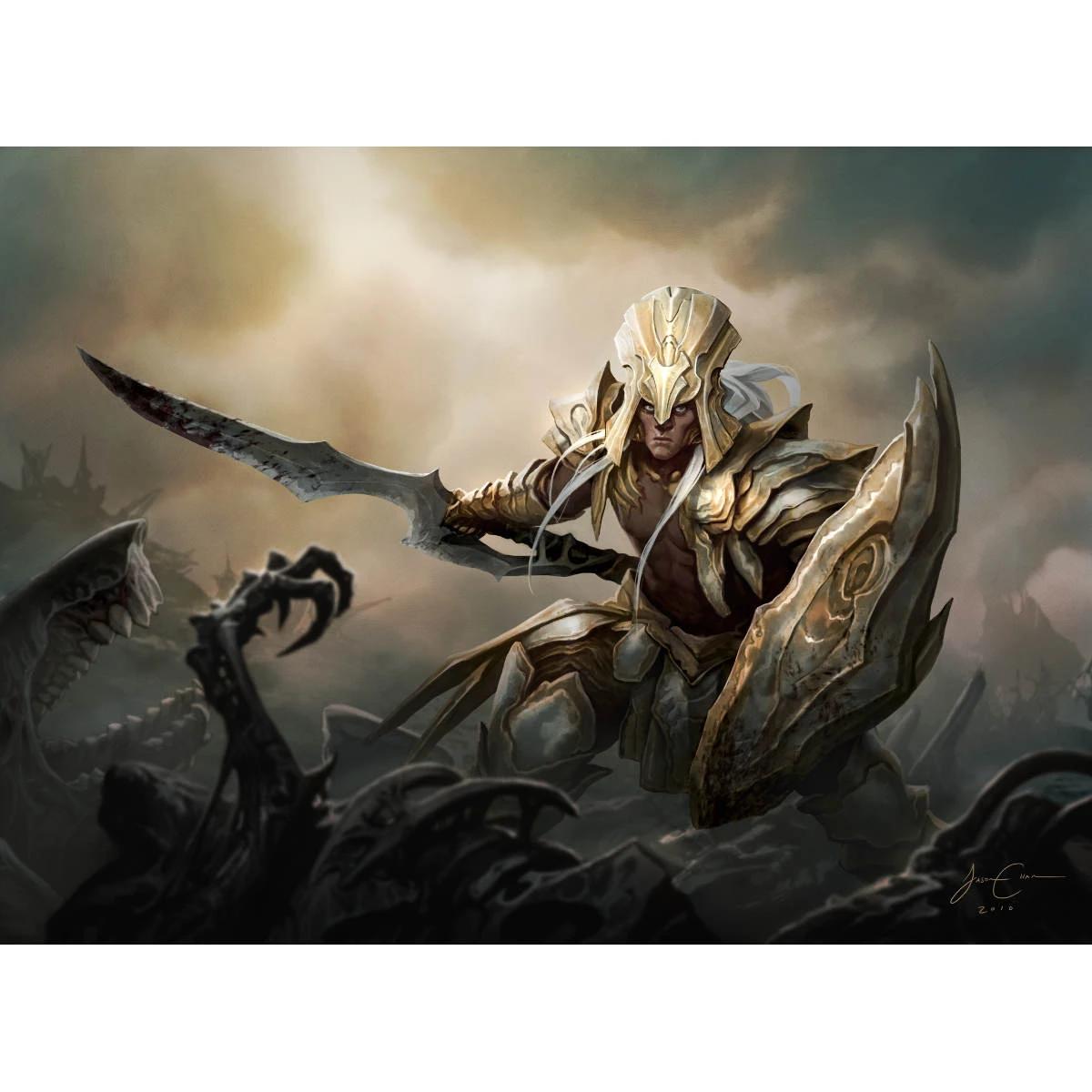


Maneuvers Expanded
These rules are intended to supplement the ones provided in the PHB for Battlemasters. The Battlemaster Archetype replaces the PHB Combat Superiority feature with the below feature. Specialized Technique (pg. 11) can be taken in place of a Fighting Style or Combat Stance, granting Superior Technique to a non-Battlemaster martial.
Combat Superiority (Revised)
Replaces Combat Superiority
When you choose this archetype at 3rd level, you learn maneuvers that are fueled by special dice called superiority dice. Choose a specialization - Cut-Throat, Mystic Knight, Savage, or Warlord - which you cannot change later, reflecting the style of your battlefield superiority.
Maneuvers. You learn four maneuvers of your choice, which are detailed below, that must be chosen from your specialization or the Combat Maneuvers group. If a maneuver has prerequisites, you must meet the requirements to choose or use it. Many maneuvers enhance an attack in some way; if so, you can use only one maneuver per attack. Other maneuvers replace an attack or action. If such a maneuver requires an attack roll, you can add any magical bonuses from your weapon to the damage roll.
You learn two additional maneuvers of your choice at 7th, 10th, and 15th level. At the end of a long rest, you can replace one maneuver you know with a different eligible one.
Superiority Dice. You have four superiority dice, which are d8s. A superiority die is expended when you use it. You regain all of your expended superiority dice when you finish a short or long rest. You gain another superiority die at 7th and at 15th level.
Combat Supremacy: Starting at level 7, when you use a maneuver that uses your superiority die in a damage roll, you can expend one additional superiority die to add it to your damage rolls for that maneuver.
Saving Throws. Some of your maneuvers require your target to make a saving throw to resist the maneuver’s effects. The saving throw DC is calculated as follows:
Maneuver save DC = 8 + your proficiency bonus + your Strength or Dexterity modifier (your choice)
Superior Technique
Replaces Martial Adept Feat
Choose a specialization - Cut-Throat, Mystic Knight, Savage, or Warlord - if you don't already have one. You learn two maneuvers from your chosen specialization or the Combat Maneuvers group, following the rules above except as modified below.
You gain two superiority dice, which are d4s (these dice are added to any superiority dice you have from another source) and do not change size as you gain levels.
If you gain this feat or feature again, you learn two additional maneuvers from your specialization or the Combat Maneuvers group, and gain one maneuver die. Your superiority dice from this feature (but not from any other source) increase in size by 2 (e.g. from d4s to d6s), up to a maximum of d12s.
Unless you also have Combat Superiority, you cannot replace maneuvers gained from this feature at the end of a long rest. Instead, when you gain a level, you can replace one maneuver you know with a different eligible maneuver from your specialization or the Combat Maneuvers group.
Ki-Fueled Superiority
Optional 7th-level monk feature
Your focused training has resulted in secret, deadly techniques. You learn two maneuvers of your choice, but do not gain any superiority dice. When you use a maneuver gained from this feature, roll your martial arts die in place of a superiority die (do not replace the maneuver save DC with your ki save DC). You can't use stunning strike on an attack caused or affected by a maneuver.
You can use these maneuvers a number of times, combined, equal to your Wisdom modifier, and regain all uses when you finish a long rest. While you have no uses available, you can use a maneuver by spending 1 ki point. When you gain a level in this class, you can replace one maneuver granted by this feature with a different eligible one.
Roguish Superiority
Optional 5th level rogue feature
You learn two maneuvers of your choice, which must be triggered by your weapon attack hitting a creature. When you gain a level in this class, you can replace a maneuver you know from this feature with a different eligible one.
When you hit with an attack that is eligible for sneak attack on your turn, you can instead apply a maneuver you know to it. In place of a superiority die, roll your sneak attack dice, but remove the two highest rolls. This counts as a use of sneak attack.
Raging Superiority
Alternative 9th, 13th, 17th level barbarian feature
Your combat style is unrefined but effective. In place of Brutal Critical, you can choose to instead gain the Superior Technique feature.
Combat Maneuvers
An asterisk (*) denotes a modified PHB/TCE maneuver. A cross (✝) denotes a maneuver eligible for use with Roguish Superiority.
Absolute Territory
Prerequisite: 10th level
As an action, you expend a superiority die and begin a combat patrol or overwatch, establishing area denial. Until the start of your next turn, creatures provoke a special opportunity attack from you when they move 5 feet or more while within 30 feet of your current position.
You get a special reaction that you can take once on every creature’s turn, until the start of your next turn. You can only use this special reaction to either make a ranged attack or to move up to half your speed without provoking opportunity attacks and make a melee attack, and you can’t use it on the same turn that you take any other reaction. You must target the triggering creature with this attack, and if you hit, you deal additional damage equal to your superiority die.
Breaking the Wall
Prerequisites: Combat Superiority, 10th level
As a bonus action, you focus briefly to battle beyond the limits of your endurance. Expend a hit die and recover two superiority dice, up to your maximum number.
Dazing Blow✝
When you hit a creature with an unarmed strike, you can expend a superiority die to add it to your damage roll and force the target to make a Constitution saving throw. On a failure, it can either use an action or move on its next turn, but not both.
Disarming Attack✝
PHB pg. 74
Feinting Attack*✝
When you hit a creature with a melee attack, you can expend a superiority die to add it to your damage roll and bait it into an opening. If the target attempts to attack you before the start of your next turn, you can use your reaction to make a melee attack against it prior to its attack.
Goading Attack✝
PHB pg. 74
Lunging Attack*
Before you make a melee attack on your turn, you can expend one superiority die to increase your reach by 5 feet until the end of your turn. If you hit with this attack, add your superiority die to the attack’s damage roll.
Parry*
When you are hit by an attack, you can use your reaction and expend a superiority die to add it to your AC against this attack, potentially causing the attack to miss.
At 10th level, the AC bonus lasts until the end of your turn.
Perfect Rush
Prerequisite: Combat Superiority, 15th level
You prepare a flawless combination of strikes. As an action, expend a superiority die and begin concentrating (as if on a spell). For one minute or until your concentration ends, add your superiority die to your weapon damage rolls.
Precision Attack
PHB pg. 74
Punishing Strike✝
Before you roll damage for a weapon attack, you can expend a superiority die to add it to your damage roll and maximize one damage die of your choice, treating the die as if you rolled its maximum value. On a critical hit, you maximize two dice of your choice.
Rain of Feathered Death
Prerequisite: 7th level
As an action, expend a superiority die and make one attack with a ranged weapon against each creature of your choice within a 10 foot radius of a point you choose within 60 feet of you. If you hit, your superiority die replaces your usual weapon die.
At 15th level, the radius expands to 20 feet.
Pushing Attack✝
PHB pg. 74
Reactive Strike (Brace*)
As a reaction to a creature moving into the reach of your weapon, you can expend a superiority die and make a melee attack against it. On a hit, you deal additional damage equal to your die result and the creature loses 10 feet of movement (to a minimum of zero).
At 10th level, the movement loss increases to 20 feet.
Slayer's Rampage
Prerequisite: 7th level
Armies fall before your blade. As an action, you can expend a superiority die and gain the benefit of a Disengage action. Choose any number of creatures, up to the die result plus your proficiency bonus, provided that you move within 5 feet of each targeted creature on this turn. Each target must make a Constitution saving throw. On a failure, it is reduced to 0 hit points, unless it has a Challenge Rating greater than half your proficiency bonus (rounded down). Such a creature, or one that succeeds on its saving throw, is unaffected.
Strikes of Steel Wind
Prerequisite: 7th level
As an action, you vanish to strike like the wind. Choose creatures you can see within 30 feet of you, up to a number equal to your proficiency bonus, and expend a superiority die. Make one attack against each target, using your superiority die in place of your usual weapon die. You can then teleport to an unoccupied space within 5 feet of one of the targets.
At 15th level, your attacks deal an additional superiority die of damage.
Sweeping Attack*✝
When you hit a creature with a melee attack, you can expend a superiority die to damage other creatures with the same attack. Choose any number of other creatures, up to your proficiency bonus, within your weapon's range. Each target takes damage equal the number you roll on your superiority die in the same type dealt by the original attack.
At 15th level, you deal two superiority dice in damage to each target.
Tactical Assessment
TCE pg. 42
Tripping Attack✝
PHB pg. 74
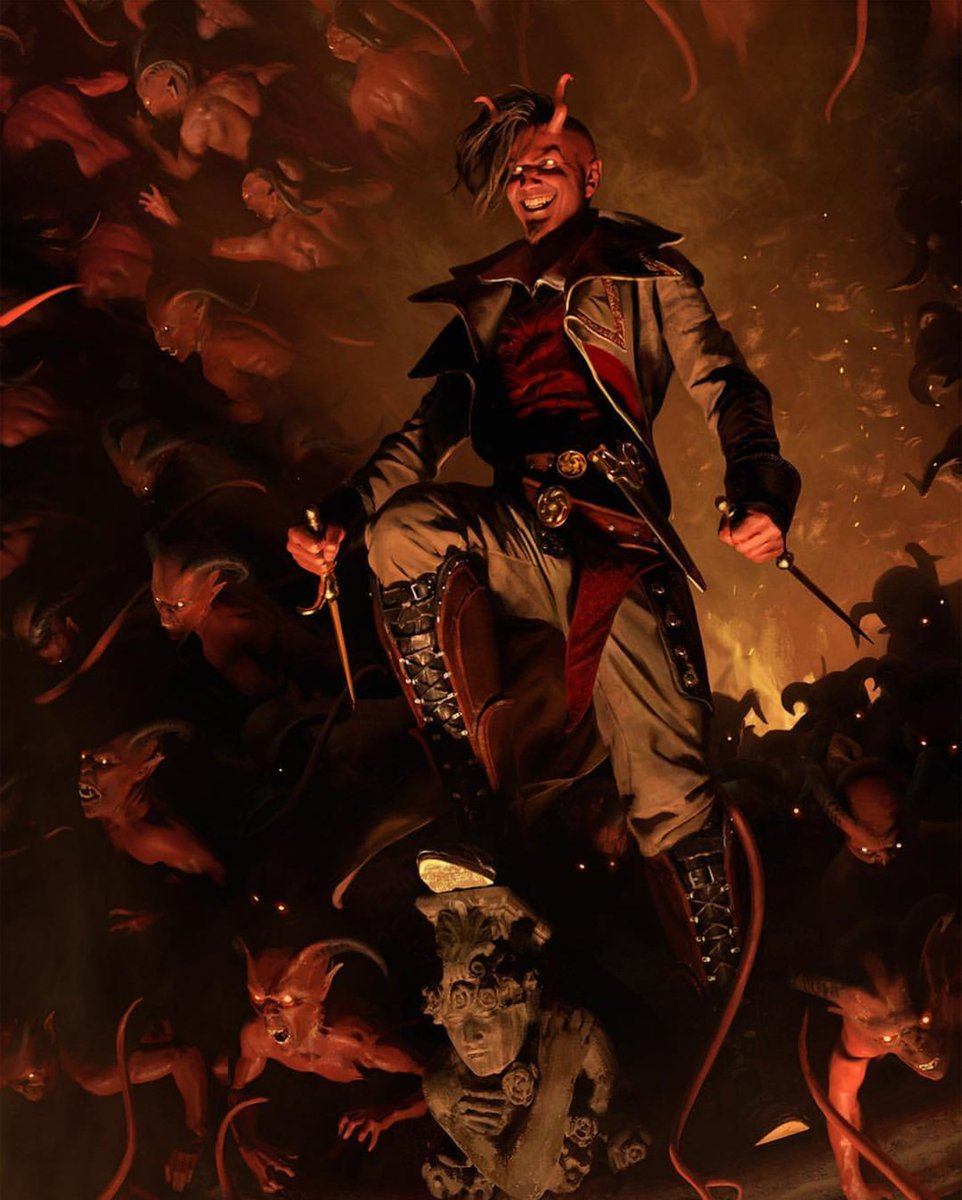


Wind Slash
Prerequisite: 10th level
You strike in a blur. As an action, expend a superiority die and teleport to an unoccupied space you can see up to 30 feet away. Each creature in a straight line between your initial and final position takes your superiority die plus ability modifier in damage of your weapon's type.
At 15th level, the range of this ability becomes 60 feet.
Cut-Throat Maneuvers
Alternative Medicine
As a bonus action, you expend a superiority die while binding the wounds of yourself or another. The target regains hit points equal to your die roll, and can choose to expend a hit die to regain additional hit points, as if it had done so during a short rest. After a creature benefits from this effect, it cannot do so again until it finishes a short or long rest.
Ambush
TCE pg. 42
Dirty Trick✝
Prerequisites: 10th level
When you hit with a melee attack, you can use a bonus action and expend a superiority die to force the target to make a Wisdom saving throw. On a failure, the creature takes your superiority die in bludgeoning or piercing damage (your choice) and is blinded until the end of its next turn.
Disrupting Strike
When a creature within your reach begins to cast a spell, you can expend a superiority die and use your reaction to make a melee attack against it. On a hit, add the die result to your damage roll, and the target must succeed on a Constitution saving throw or the spell fails, but the spell slot is not lost.
Evasive Footwork*
When you move, you can expend one superiority die, rolling the die and adding the result to your AC until the end of your turn. If you take the Dash, Disengage, or Dodge action, the bonus instead lasts until the start of your next turn.
Flash of Steel (Quick Toss*)
As a bonus action, you can expend one superiority die and make one attack with a light weapon that has the thrown property, drawing it from an appropriate container. Add your superiority die to the attack roll.
Mugging✝
Prerequisite: 10th level
Immediately after you hit a creature with a melee attack on your turn, you can expend a superiority die to add it to the damage roll and use a bonus action to make a Dexterity (Sleight of Hand) check against the target's Wisdom (Perception). On a success, you steal or plant a small object on their person, such as a coin purse or bottle.
Piercing Shot✝
When you make a ranged attack with advantage and hit, you can expend a superiority die to pierce the target. Any creature in a straight line behind it, within the normal range of your weapon, takes piercing damage equal to your die roll, up to a number of creatures equal to your proficiency bonus.
Silencing Strike✝
Prerequisite: 7th level
When you hit a creature with a weapon attack, you can expend a superiority die to inhibit its ability to speak or shout. Add your superiority die to the damage roll, and the creature must succeed on a Constitution saving throw or be unable to speak clearly beyond 10 feet, or cast a spell with a verbal component, until the end of your next turn.
Smash and Grab (Grappling Strike)✝
Immediately after you hit a creature with a melee attack on your turn, you can expend a superiority die and use a bonus action to attempt to grapple the target with a free hand. Add your superiority die to the grapple check.
Snipe
As a bonus action, you can expend a superiority die to carefully aim, giving yourself advantage on your next ranged attack. If you hit, add your superiority die to the damage roll.
Spider Dance
Prerequisite: 7th level
As part of your movement, you can expend a superiority die and gain a climb speed equal to your walking speed until the end of your turn. If you make a Strength check related to climbing on this turn, add your superiority die to the roll.
As a reaction to being knocked prone, you can expend a superiority die and stand up, reducing any damage taken by the die result plus your Dexterity modifier (to a minimum of 0 damage).
Venomous Strike
As a bonus action, you can expend one superiority die to coat a melee weapon, or up to three pieces of ammunition, with a poison, venom or toxin that you have on your person. The next attack you make with the envenomed weapon deals additional poison damage equal to your superiority die.
Mystic Knight Maneuvers
Arcanist's Eye
When you make a Intelligence (Religion) or Intelligence (Arcana) check, you can expend a superiority die and add the die roll to the result.
Airborne Spellstrike
Prerequisite: Combat Superiority, 7th level
As a bonus action, you can expend a superiority die and lift yourself off the ground briefly. You gain a flying speed equal to your walking speed until the end of your turn. If you hit with the next weapon attack you make this turn, add your superiority die to the damage roll. If you end your turn in the air, you float safely downward a distance up to your speed, then fall any remaining distance to the ground.
Branding Spellstrike
When you make a melee attack roll, you can expend a superiority die and release divine light to pierce illusory veils. The target loses the benefit of invisibility or illusion spells (such as mirror image), if any, against your attack. On a hit, add your superiority die to the damage roll and the target sheds dim light in a 5-foot radius until the end of your next turn, losing the benefits of invisibility for the duration.
At 10th level, the target emits light for one minute.
Chilling Spellstrike
As an action, you can expend a superiority die and make a melee attack with your weapon, releasing painful frost in a 15 foot cone that emanates from you and includes the target. Your target takes damage as usual if you hit, and each creature in the affected area must succeed on a Constitution saving throw or take your superiority die in cold damage.
At 10th level, this ability releases a 30 foot cone.
Enfeebling Spellstrike✝
Prerequisite: 7th level
When you hit a creature with a melee attack, you can use a bonus action to expend a superiority die and release negative energy. The attack deals extra necrotic damage equal to your superiority die, and the target must succeed on a Constitution saving throw or it deals only half damage with weapon attacks that use Strength until the end of its next turn.
Flickering Defense
You can use a bonus action to partially blink through the ethereal plane, expending a superiority die. Until the start of your next turn, when you are hit by an attack, roll your superiority die. On a 1 or 2, you take damage as usual. On any other result, you gain resistance to the triggering damage.
Ground Eruption
As an action, you can expend a superiority die and cause an earth shockwave in a straight line 30 feet long and 5 feet wide. The area affected becomes difficult terrain, and any creature in the area must succeed on a Strength saving throw or it is knocked prone and takes bludgeoning damage equal to one roll of your superiority die for each attack in your attack Action.
At 10th level, the shockwave is 10 feet wide.
Ignited Spellstrike✝
Prerequisite: Combat Superiority, 10th level
When you hit a creature with a weapon attack, you can use a bonus action and expend a superiority die to set it aflame. The target takes fire damage equal to your superiority die and must make a Dexterity saving throw or be set aflame for one minute. At the start of each of its turns, the creature takes fire damage equal to your superiority die, ending when it uses an action to put out the flame or is otherwise doused.
Lesser Regeneration
When you expend a hit die to recover hit points, you can expend a superiority die to add it to the number of hit points you recover. If you do so during a short rest, you do not recover this superiority die at the end of that short rest.
Salamander Charge
Prerequisite: 10th level
When you Dash as an action, you can expend a superiority die to ignite the ground at your feet. You gain the benefit of a Disengage action, and a 5-foot wide wall of shimmering, spectral fire appears behind you, along the path you take. Any other creature within 5 feet of the wall at the start of its turn must make a Dexterity saving throw or take your superiority die in fire damage. If a creature enters the wall for the first time on a turn, it takes your superiority die in fire damage. The flames are extinguished at the start of your next turn.
At 15th level, your flame wall ignites a creature that fails its saving throw or enters the wall, and it takes your superiority die in fire damage at the start of its turn for one minute or until the flames are extinguished with an action.
Shocking Spellstrike✝
When you hit a creature with a weapon attack, you can expend a superiority die to release a burst of static. You deal extra lightning damage equal to your superiority die and the target cannot take reactions until the start of your next turn.
Thunderclap Rush
Prerequisites: Combat Superiority, 15th level
When you take the Attack action, you can use a bonus action to charge a melee weapon with sonic energy and expend a superiority die. Each time you hit with the weapon during this action, all creatures in a 10 foot cube originating from you and including the creature must make a Constitution saving throw. On a failure, a creature takes thunder damage equal to your superiority die and is pushed 5 feet away from you. On a success, a creature takes no damage and is not pushed. Each thundering makes a loud noise audible up to 100 feet away.
Unstable Emanation
Choose a damage type - acid, cold, fire, lightning, or thunder - and expend a superiority die as a bonus action. Until the start of your next turn, your weapon attacks deal damage of the chosen type instead of their usual damage type, and you add your superiority die to your next damage roll on this turn.
At 10th level, the duration of this effect lasts for one minute or until you choose to end it.
Savage Maneuvers
Crippling Strike
Prerequisites: Combat Superiority, 10th level
When you hit a creature with a melee attack, you can expend a superiority die to inflict a lingering injury. It must succeed on a Constitution saving throw or be maimed in one of the following ways (your choice):
- If the creature attacks more than once on its turn, it takes a penalty to its damage rolls on all attacks after the first. The penalty is equal to a roll of your superiority die, to a minimum of 0 damage.
- A form of the creature’s speed (e.g. walking or flying) is reduced by an amount equal to 10 feet plus 5 x your die roll (to a minimum of 0 speed).
At the end of each of its turns, the creature can repeat the saving throw, ending the effect on a success.
Earthshaking Slam
Prerequisite: 7th level
As an action, you expend a superiority die and generate a shockwave around yourself by slamming the ground. Each creature within 10 feet of you must make a Strength saving throw, or it is knocked prone and takes bludgeoning damage equal to one roll of your superiority die for each attack in your attack Action. A target that succeeds on its saving throw takes no damage and is unaffected.
When you take damage from falling, you can use this ability as a reaction, centered on where you land. You gain resistance to the triggering damage and don't fall prone.
At 15th level, the radius of your slam increases to 20 feet.
Feral Senses
When you make a Wisdom (Survival) or Wisdom (Medicine) check, or a Wisdom (Perception) check that relies on hearing or smell, you can expend a superiority die and add the die roll to the result.
Heroic Might
Prerequisite: 7th level
You can expend a superiority die to perform a momentary feat of strength beyond that of ordinary men. Add twice your die roll to your Strength for the purposes of determining how far or high you can jump, or how much weight you can lift, carry, push, or throw. This temporary Strength lasts until you finish the feat (such as leaping a crevasse), or one minute, whichever is shorter.
Alternatively, you can expend a superiority die to add the die result to one Strength check.
Juggernaut Charge
When you Dash as an action, you can expend a superiority die and move in a straight line through any number of creatures your size or smaller, as long as you have movement to do so. Each time you enter a creature's space, it can use its reaction to move 5 feet into an empty space. If it cannot or does not move, it takes your superiority die plus your Strength modifier in bludgeoning damage. At the end of this charge, you lose any remaining movement.
You cannot move into a creature's space if you do not have enough movement to exit its space.
Mighty Throw
Prerequisite: 10th level
When you successfully grapple a creature your size or smaller and have an additional free hand, or lift an object using your action, you can choose to expend a superiority die to hurl it, sending it airborne in a direction of your choice up to 5 feet times the die result. The target takes your Strength modifier in bludgeoning damage, plus one roll of your superiority die for each 10 feet it is thrown. It takes half damage if it succeeds on a Dexterity saving throw. If the thrown creature or object would hit another creature, that creature must also make a Dexterity saving throw, or it takes half damage. A thrown creature takes damage as if it were thrown the full distance, even if its flight is stopped by a wall, object, or creature.
At 15th level, add your Strength modifier to the die result when calculating how far you can throw an object or creature.
Menacing Attack✝
PHB pg. 74
Packleader's Howl
Roaring with rage, you inspire your allies to greater ferocity. As a bonus action, choose a number of other creatures up to your proficiency bonus within 30 feet who can hear you, and expend a superiority die. If an affected creature hits with its next attack before the start of your next turn, add your superiority die to its damage roll.
Provoking Taunt
As a bonus action, you expend one superiority die and goad your enemies. Choose a number of creatures within 30 feet that can hear you, up to your proficiency bonus. Each target must succeed on a Wisdom saving throw or take a penalty equal to your superiority die on all attack rolls against targets other than you until the start of your next turn.
Savage Constitution
If, at the start of your turn, you are under an effect that causes the charmed, frightened, or poisoned condition, or that allows you to make a saving throw at the end of each of your turns to end it, you can immediately expend a superiority die to make a saving throw against the original save DC, ending the effect on a success. Add your superiority die to the roll.
Shake It Off
When you make a an ability check to defend against a grapple, or a saving throw against an effect that subjects you to the grappled, prone, restrained, or stunned condition, you can expend one superiority die and add the die roll to your check or saving throw.
Steelskin
When you are hit by an attack, you can use your reaction to expend a superiority die and reduce the damage by the die roll plus your Constitution modifier, to a minimum of zero.
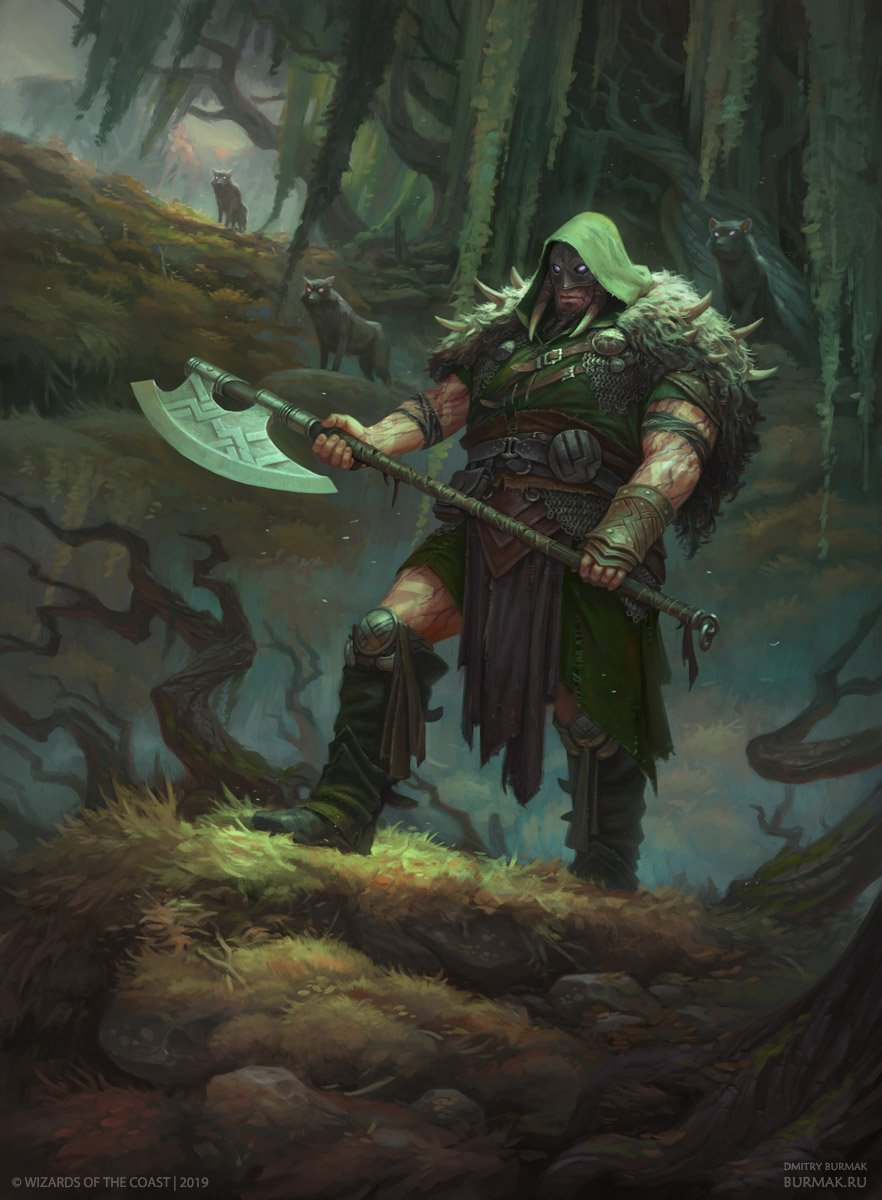

Sundering Strike✝
When you hit a creature with a melee attack, you can use a bonus action to expend a superiority die and damage natural or worn armor. Add the die to the damage roll, and the target must make a Constitution saving throw. On a failure, its AC is reduced by by 1 until the damage can be repaired, either with appropriate armorer's tools or, for natural armor, when the creature receives magical healing or finishes a short or long rest. A creature's AC cannot be reduced below 10 + its Dexterity modifier.
At 10th level, you no longer expend your bonus action when you use this maneuver.
Warlord Maneuvers
Battle Relief (Bait and Switch*)
As part of your movement into the space of a willing creature within 5 feet, you can move it into the space you previously occupied and expend a superiority die. Until the start of your next turn, the ally gains a bonus to AC equal to the die result. You must both fit in the space available, and neither you nor the target provoke opportunity attacks for this movement.
Commander's Strike*
When you take the Attack action on your turn, you can forgo one of your attacks and use a bonus action to direct one of your companions to strike. When you do so, choose a friendly creature who can see or hear you and expend one superiority die. That creature can use its reaction to make one weapon attack, adding your superiority die to the attack’s damage roll.
At 10th level, you no longer expend your bonus action when you use this maneuver.
Coordination
Prerequisite: 7th level
On your first turn of combat, you can use your bonus action and expend a superiority die to issue tactical orders to your allies. You can distribute bonuses to the initiative of any number of other creatures that can hear you, so long as the sum of those bonuses is equal or less than your die roll plus your Charisma modifier.
After this, reorder initiative. If a creature's new initiative is now higher than yours, it is placed in the initiative order immediately after you.
Distracting Strike✝
PHB pg. 74
Inciting Strike✝
When you hit a creature with a weapon attack, you can expend a superiority die to create an opening for your allies. Add the die to your damage roll, and until the start of your next turn, attack rolls against the creature are considered two higher for the purposes of determining whether or not the result is a critical hit. This effect ends if the creature takes a critical hit as a result of this modifier.
Inspiring Cry
Prerequisite: Combat Superiority
As a reaction to a creature within 30 feet of you making or hitting with an attack, you can choose another maneuver you know that is normally triggered by your attack or hit and apply it to their attack or hit. If the maneuver rolls a superiority die, halve the die result (rounding down).
Maneuvering Attack✝
PHB pg. 74
Phalanx Formation
Prerequisite: Combat Superiority, 7th level
You can use an action to put your allies in order, bolstering their defenses. Expend and roll a superiority die. Until the start of your next turn, you and your allies gain a bonus to AC and Dexterity saving throws equal to the die result while within ten feet of you.
At 15th level, the range of this ability increases to 20 feet.
Rally
PHB pg. 74
Riposte
PHB pg. 74
Silver-Tongued (Commanding Presence)
TCE pg. 42
War Master's Charge
Prerequisite: 7th level
When you Dash as an action, you can expend a superiority die to inspire others to join your avalanche of steel. Choose a number of allied creatures who can hear you, up to 1 plus your Charisma modifier, and designate a creature you can see as a target. Each ally can use its reaction to move up to its speed towards the target and make one melee attack, adding your superiority die to its attack roll. This movement must be in the most direct, safe path available. If the target is slain, you can designate a new target for any remaining allies.